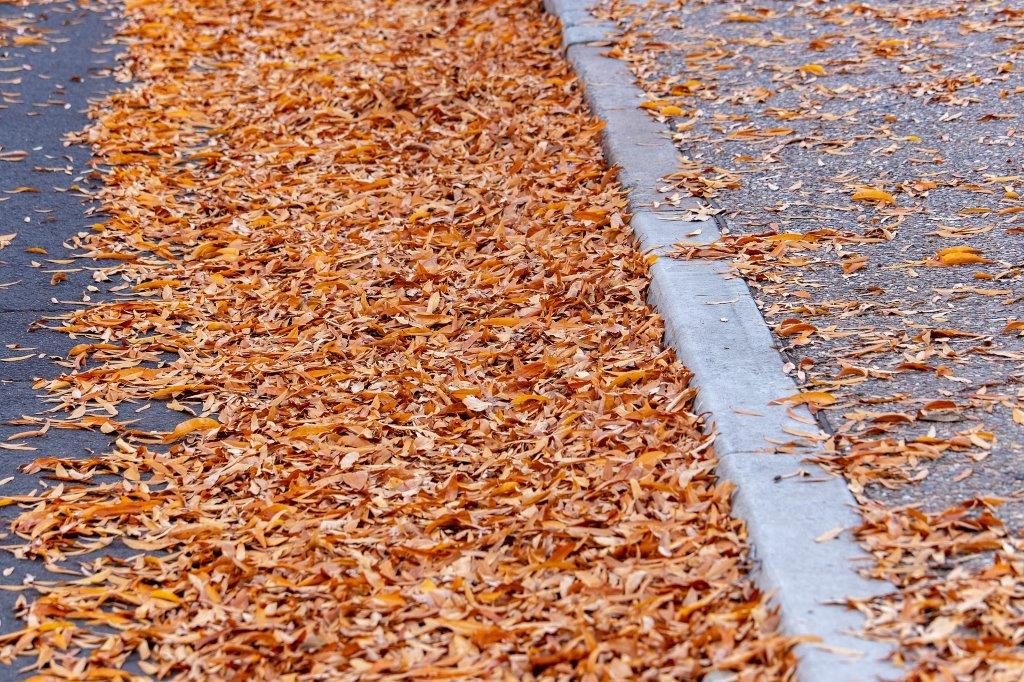
As pretty as the colors of autumn leaves are (and as much as we enjoy seeing them), they can present safety and visitability issues as they become slippery or mask items hidden beneath them.
Many of us look forward to the change of seasons – the first buds on the trees in the springtime and those early springtime flowers, the brighter sunshine and warmer temperatures of the summer, the fall colors and cooler temperatures of the fall or autumn, and the snow (depending on where we live) and the coming holidays of the wintertime. They help us plan our year, mark the passage of time, and give us something to look forward to happening. They also give us a reference point – last spring or the spring of a certain year, for instance.
One obvious thing that the seasons do is to separate or divide the year into quarters or four parts. This is true even in those places that don’t have such strong evidence of each season and experience very short summers or growing seasons and places with mild winters and no threat of ice or snow. We look back upon the previous spring or summer and suddenly realize how recent that really was. We remember fond times as well as memories not so pleasant when we reflect upon past seasons. It’s not uncommon at all to suddenly recall that something we remember was actually five, ten, or more seasons ago.
Seasons have their outward reflections on our lives. If we did not know what the temperature or season was for someone that we were looking at in a photograph, there would be visual indications of what time of year it was. For instance, during the springtime (but not necessarily the precise month), the trees regain their color and the leaves, the flowers add white and yellow especially to the landscape, and the clothing is noticeably lighter than it is in the wintertime – perhaps no hat or gloves and a lighter jacket or possibly just a heavy shirt instead. In the summertime, we would expect to see someone dressed in shorts, tee shirts, flip flops or sandals, and possibly a cap or sun hat.
The point is that we have vivid memories and anchor points for the various seasons – even when our local season is longer or shorter than those experienced in other parts of the country. The daylight hours, position of the sun, shadows cast, clothing, plants, and other indications of the seasonal variations one area has over another can be detected rather easily.
Obviously in warmer weather situations (spring and summer, for example), our interests turn to outdoor activities – sitting on the porch, taking a walk, playing in the yard, taking a nap in the hammock, planting and gardening, mowing the grass, cooking on the grill outdoors, and experiencing the fresh air and pleasant temperatures.
In colder months, our outdoor activities don’t necessarily disappear, but they change appropriate for the temperatures and how we are dressed to be comfortable in those weather conditions. Many people enjoy outdoor activities year-round, even with cold, snow, ice, and other issues to consider. In fact, they look forward to activities that can only be done at that time. Other people are more warm weather appreciative.
In addition to marking the passage of time and serving as bookends for seasonal observances that happen during each of those roughly ninety-day periods (holidays, birthdays, and celebrations), the seasons help us remember to perform home maintenance tasks or to make sure that our homes are safe and ready for everyone to use – including visitors and guests.
From an aging in place standpoint, our own personal safety tops the list of our concerns. It also is paramount for considering the people that might be visiting us, calling upon us, or coming to an event we are hosting. This is the concept of visitability.
Just as many people change the batteries in their smoke detectors when the time changes in the spring and the fall, we should inventory and inspect our home to see that it is up to the challenge of the season and how we might be using it during that time. Of course, the best time to make our inspections and make necessary modifications, tweaks, or improvements is before they are needed and prior to the arrival of that particular season we are considering.
Aside from what may be an issue inside – and we constantly have an opportunity to view and consider such issues, regardless of the time of year – the perimeter of our homes should be a focus. Fall leaves can hide garden hoses, toys, dog bones and toys, yard tools, divots, uneven walkway surfaces, protruding or exposed tree roots, and other things in and about the yard that normally we would see and avoid. As pretty as the fallen leaves are with the patterns they form and the colors they offer, they can be slippery – especially when they are wet with due, frost, or precipitation.
In the colder months, there can be patches of ice that form or even grass and leaves that can develop a slipperiness. The ground can be frozen, encapsulating divots, footprints, and other hazards to stepping and walking on the surface safely. Of course, there can be glare when the sun reflects off snow-covered or icy surfaces.
Glare is also prevalent during summer months when the intensity of the sun strikes reflective surfaces in ways that we aren’t expecting. We also are more prone to overexposure of the sun and sunburn or skin issues.
The changing seasons are fun to anticipate and experience once they have arrived, but they are not without their particular considerations for aging in place considerations. We need to be especially diligent with how our sensory perception changes (including vision and balance) with the weather, how much clothing we are wearing, and the types of activities we might want to do.
